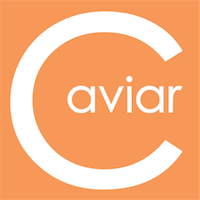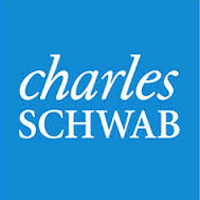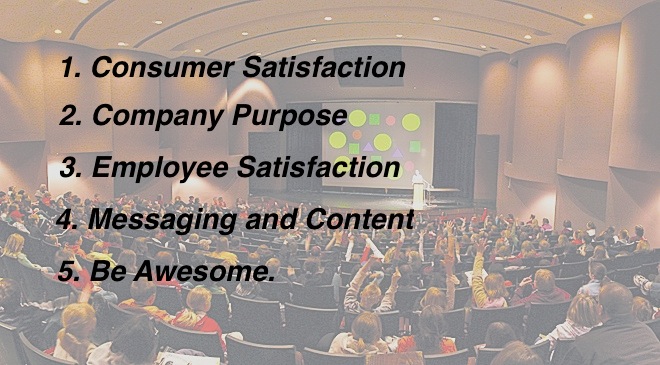If your employer brand is just a one-liner on a slide in your new hire onboarding deck, you’re doing it wrong. A compelling, well-defined corporate culture that shines through across all your company’s activities is key to your long-term recruiting success. But how do you make it come to life for those outside of your company? Let’s start by elaborating on “David Smooke’s 5 Components of Employer Branding” (full slide deck at end of this post):
Leverage Consumer Satisfaction
First things first. If you want to attract top talent, you need to be providing your customers with exceptional product and service. If all the buzz around your company is about shoddy products, treating your employees poorly, or exorbitant executive payouts, you’re not going to be attracting the best and brightest to work for your organization.
That said, you can leverage those happy customers and your resulting positive brand halo in how you position your company to prospective employees. Take a look at your most recent round of job descriptions. If you replaced your company’s name with that of your closest competitor’s, would anyone be able to tell the difference? Use your job listings to tell your company’s story as you would with any other communication channel.
Buffer does a great job with this, focusing on a different aspect of their brand story that’s most relevant to the job listing at hand. For example, their Community Champion job listing features a gallery of social images that highlight community created content and examples of some of the activities the person who takes on this role will be engaged with. Their Content Crafter listing, on the other hand, written in a typical “5 Ways…” list style, knows that content marketing folks are often focused on growth hacking, and has a data-rich intro that will draw them in.
Bring Company Purpose to Life
Newsflash: No one wants to go to work for a company just for the paycheck. Yes, we still all want to be paid a fair wage for our time, but surveys are showing that increasingly, your prospective employees are looking to work for a purpose-driven company. And to work with a team that shares their values.
If you’ve ever been to an event at SmartRecruiters, or have heard their founder Jerome Ternynck speak, you come away aware of their commitment to reaching Zero Unemployment, and you’ve probably been enlisted to help spread the word about the Zero Unemployment Movement. Having a simple to communicate company purpose, and one that engages your target customers, is a goal to strive for, and SmartRecruiters have given us a great template to work from.
Social startup Sparkcentral is focused on building the future of customer service. Their blog brings this to life with frequent articles highlighting companies providing great customer service, case studies, and probing on more tactical concerns such as the importance of punctuation in social customer service. This customer service focus plays out on their hiring page as well. In the spirit of providing their potential employees with the insights they need to determine if they’re a good fit for the culture, a major chunk of this prime real estate is given over to sharing their corporate values, which include: customer-driven action; work smarter, not harder; and a**holes and egos will not survive.
Both the values themselves, and the specific way in which they’re expressed, give candidates a solid feel for the company culture.Too often corporate values only bubble up after you’ve joined an organization, and more often still, are too broad to translate directly into the actions and competencies you need to be successful. Sparkcentral does a great job of concisely but explicitly spelling out what those values mean in action.
Share Employee Satisfaction
What’s the best way to share your employee satisfaction with the world? By highlighting them and letting them share, in their own words, what it’s like being part of your team.
Genentech’s robust career portal does a great job of this, emphasizing the diversity and personality of its employees – and showing off what it is about their corporate culture that makes them a perennial Fortune Best Places to Work honoree. Genentech’s employee profiles shine a spotlight on a range of job areas, and provide a personal POV on an individual’s career highlights and what aspects of the culture mean the most to them. And unlike many other companies within highly regulated industries, Genentech has embraced social media as a platform for sharing their culture, including lively company social network pages. Oh, and just in case you thought biotechnology was stuffy, they’ve also included a link to an employee spoof of the Gagnam Style video, titled “Geeknam Style.”
Now that you have happy and engaged employees sharing their perspectives on your career site, it’s time to enable your employee base at large to be part of your recruitment efforts. Encourage (and reward) employees for sharing job openings on their social networks, and tap into social recruitment tools that can help your recruiters leverage the (opted-in) power of your employee base for identifying the right candidate for your hardest to fill positions.
Keep Messaging and Content Consistent
If your company presents itself as being on the forefront of building the future of your industry, but all of your employees are using Blackberry phones, forced to work exclusively in the office between the hours of 9 to 6, while wearing business attire, you’re suffering from a disconnect in your messaging and content. The content you share on your corporate website, and across your social channels, needs to square up with the realities of your day-to-day corporate culture to attract candidates who will be a good fit for more than just the interview.
Marc Jacobs is a master of telling a consistent brand story across platforms, giving fans and prospective employees alike a good feel for the corporate culture through their social media channels and the World of Marc Jacobs section of the corporate website. The corporate blog, and the Google Plus page, share a wide range of content, including evocative instagram tags of their products, recent ad campaigns, press coverage, shots of the store holiday window displays, international store news and photos, special events coverage, and staff profiles/min interviews. Basically, everything you’d want to know (including the dress code style) before applying.
Be Awesome
Create a corporate culture aligned to your mission that makes others want to join in, and share that culture everywhere you can. These four companies show that companies of all sizes can be great at sharing what they stand for:
 4. Some days, you’re just not up for a 30 minute wait on the sidewalk to get a table at your favorite local place to eat. But you’re still craving their chicken and beignets. That’s where Caviar comes in. Focusing on providing a curated selection of top restaurants typically unavailable through other services, Caviar is currently available in San Francisco, Manhattan, and Seattle. The drool-worthy photos of each menu item alone, like these at San Francisco’s Craftsman & Wolves, is enough to attract food-loving techies to apply.
4. Some days, you’re just not up for a 30 minute wait on the sidewalk to get a table at your favorite local place to eat. But you’re still craving their chicken and beignets. That’s where Caviar comes in. Focusing on providing a curated selection of top restaurants typically unavailable through other services, Caviar is currently available in San Francisco, Manhattan, and Seattle. The drool-worthy photos of each menu item alone, like these at San Francisco’s Craftsman & Wolves, is enough to attract food-loving techies to apply.
 3. Etsy has built a community and marketplace around connecting makers and customers around the world. Through their blogs, Pinterest account, and Facebook page, they’ve also used their influence to shine a spotlight on many individual creators from around the world who are running their businesses through their platform. And as a certified B corporation, they attract employees who share their commitment to using the power of business to solve social and environmental problems.
3. Etsy has built a community and marketplace around connecting makers and customers around the world. Through their blogs, Pinterest account, and Facebook page, they’ve also used their influence to shine a spotlight on many individual creators from around the world who are running their businesses through their platform. And as a certified B corporation, they attract employees who share their commitment to using the power of business to solve social and environmental problems.
 2. Charles Schwab (disclosure: I’m a former Schwabbie) caps off a wide range of community initiatives with an annual employee volunteer week, during which employees at all of their locations are encouraged to spend a day of paid time away from work giving back to their local community on the project of their choice. And one employee even explicitly cited the employee volunteer week as a key reason they took their position.
2. Charles Schwab (disclosure: I’m a former Schwabbie) caps off a wide range of community initiatives with an annual employee volunteer week, during which employees at all of their locations are encouraged to spend a day of paid time away from work giving back to their local community on the project of their choice. And one employee even explicitly cited the employee volunteer week as a key reason they took their position.
 1. Who wouldn’t like to travel the world and help students and adults experience different cultures and get paid for it? Education First does just that. And they amplify what their employees are up to through their @EFhelloworld twitter account.
1. Who wouldn’t like to travel the world and help students and adults experience different cultures and get paid for it? Education First does just that. And they amplify what their employees are up to through their @EFhelloworld twitter account.
Need more help to share your corporate culture? Check out this slide deck on how to Scale Your Employer Branding:
 Erika Heald (@sferika) is a San Francisco-based content marketing and social media consultant, with over 15 years experience creating content for HR, technology and financial services audiences. You can also find her writing on career development topics at www.citygirlcareer.com.
Erika Heald (@sferika) is a San Francisco-based content marketing and social media consultant, with over 15 years experience creating content for HR, technology and financial services audiences. You can also find her writing on career development topics at www.citygirlcareer.com.






